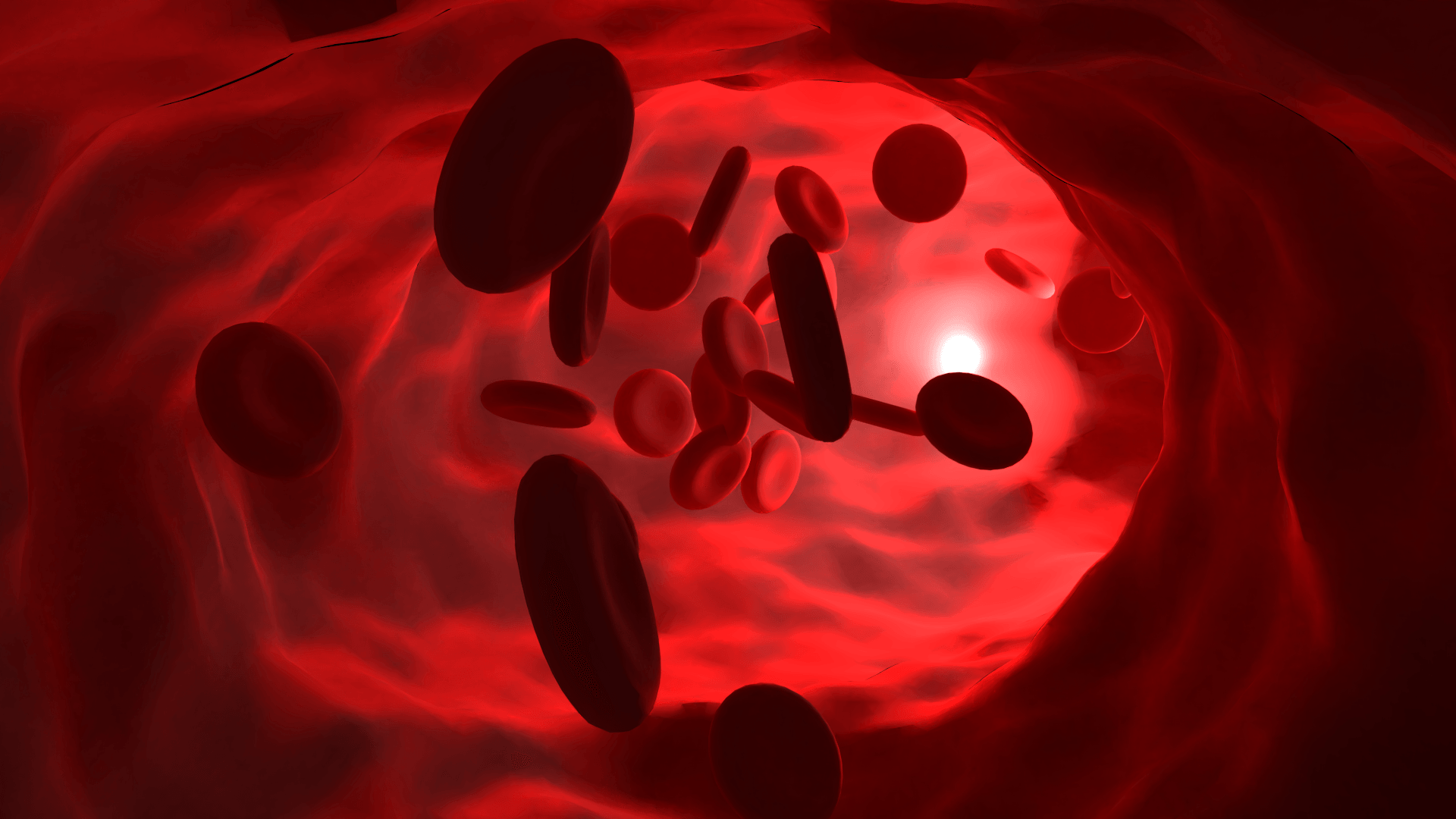Hematology

Introduction: Sickle cell disease is a genetic blood disorder characterized by the presence of abnormal hemoglobin, leading to the production of sickle-shaped red blood cells. One of the most common complications associated with sickle cell disease is vaso-occlusive crises (VOC), which can cause severe pain and organ damage. This essay aims to explain VOC crises in simple terms, exploring their causes, risk factors, pathophysiology, molecular biology, and both non-pharmacologic and pharmacologic management strategies . Causes and Risk Factors: VOC crises occur when sickle-shaped red blood cells clump together, blocking the normal flow of blood through the blood vessels. This blockage can result from various triggers, including infection, dehydration, stress, cold temperatures, or altitude changes. Certain risk factors, such as a history of previous VOC episodes, smoking, and pregnancy, can increase the likelihood of experiencing VOC crises. Pathophysiology: In individuals with sickle cell disease, the abnormal hemoglobin causes red blood cells to become rigid and sticky, making it difficult for them to flow smoothly through blood vessels. When triggered, sickle cells can become even more deformed, leading to the formation of clumps that block blood flow. This process can occur in any organ or tissue, causing pain and potentially damaging the affected area. Molecular Biology: The primary defect in sickle cell disease lies in the hemoglobin molecule. Unlike normal hemoglobin, which remains flexible and allows red blood cells to pass smoothly through blood vessels, the abnormal hemoglobin in sickle cell disease can polymerize under certain conditions. This polymerization causes red blood cells to change shape, forming the characteristic sickle shape. These sickle cells are less efficient in carrying oxygen and are more prone to clumping, leading to VOC crises. Non-pharmacologic Management: Non-pharmacologic management strategies aim to prevent VOC crises by addressing triggers and promoting overall health. Patients are advised to stay well-hydrated, avoid extreme temperatures, manage stress levels, and receive regular vaccinations to prevent infections. Additionally, adopting a healthy lifestyle, including a balanced diet and regular exercise, can help reduce the frequency and severity of VOC episodes. Pharmacologic Management: Pain Management : Pain is the most immediate and distressing symptom of a VOC. Non-steroidal anti-inflammatory drugs (NSAIDs) like ibuprofen can be used for mild to moderate pain. For severe pain, opioids such as morphine may be prescribed. It’s important to note that these medications should be used under the supervision of a healthcare provider due to their potential side effects and risk of dependency. Hydroxyurea : Hydroxyurea is an oral medication that reduces the frequency of VOCs by increasing the production of fetal hemoglobin. Fetal hemoglobin is a type of hemoglobin that does not sickle, so its presence in the blood can prevent the formation of sickle cells. The typical starting dose for adults is 15mg/kg per day, which can be increased gradually to a maximum of 35mg/kg per day based on the patient’s response and tolerance. Regular blood tests are required to monitor the effects of hydroxyurea and adjust the dose if necessary. Blood Transfusions : Regular blood transfusions can reduce the number of sickle cells in the body, thereby decreasing the frequency of VOCs. However, repeated blood transfusions can lead to complications such as iron overload, so they are typically reserved for severe cases. L-glutamine oral powder : It is a medication that helps to reduce the acute complications of sickle cell disease. It works by reducing oxidative stress in sickle cells, which can help to prevent cell sickling and the subsequent blockage of blood vessels. The typical dose is 5 grams (1 packet) taken orally twice daily. Voxelotor : It is a medication that increases hemoglobin’s affinity for oxygen, preventing the cells from sickling. The typical dose is 1500 mg taken orally once daily. This medication can cause side effects such as headache, diarrhea, abdominal pain, nausea, fatigue, rash, and fever. Crizanlizumab : It is a monoclonal antibody that blocks P-selectin, a substance on the surface of cells that contributes to the blockage of blood vessels in sickle cell disease. By blocking P-selectin, crizanlizumab can help to prevent VOCs. The typical dose is 5 mg/kg given by intravenous infusion on days 1, 8, 15 and then every 4 weeks. Please remember that this is a simplified explanation, and the actual management of sickle cell disease can be quite complex and should always be overseen by a healthcare provider. Always consult with a healthcare provider for medical advice.

Sickle Cell Disease (SCD) is a genetic disorder that affects the red blood cells in our body. These cells, which are usually round and flexible, become rigid and take on a sickle or crescent moon shape in individuals with SCD. This change in shape can cause these cells to block blood flow, leading to various complications. Pathophysiology and Molecular Biology The pathophysiology of SCD is characterized by the polymerization of deoxygenated intracellular sickle hemoglobin, causing the red blood cells to sickle. This can be likened to a gelatin dessert setting in a mold, taking on a specific shape as it solidifies. Similarly, the abnormal hemoglobin in SCD solidifies, causing the red blood cells to take on a sickle shape. On a molecular level, SCD is caused by a mutation in the beta globin gene, which leads to the production of an abnormal hemoglobin protein, called hemoglobin S. This is akin to a typo in a recipe that results in a dish with a different taste and texture. In the case of SCD, the ‘typo’ in the gene results in the production of abnormal hemoglobin, which changes the shape and flexibility of the red blood cells. Causes SCD is an inherited disorder, meaning it is passed down from parents to their children through genes. If both parents carry the sickle cell trait, there is a 25% chance that their child will have SCD. This is similar to how certain physical traits, like eye color or height, are passed down from parents to their children. Diagnosis SCD is usually diagnosed through a blood test. In the United States, this test is part of routine newborn screening. However, older children and adults can also get tested. In some cases, SCD can even be diagnosed before a baby is born through a sample of amniotic fluid or tissue from the placenta. Current Treatments The management of SCD focuses on preventing complications, relieving symptoms, and improving the quality of life for patients. Here are some of the current treatments: Hydroxyurea : This medication increases the production of fetal hemoglobin (HbF), a type of hemoglobin that does not sickle. By increasing HbF levels, hydroxyurea reduces the frequency of pain crises and the need for blood transfusions. For example, a patient taking hydroxyurea may experience fewer episodes of severe pain compared to someone not on the medication. Blood Transfusions: Regular blood transfusions can help reduce the risk of stroke and other complications by increasing the number of normal red blood cells in circulation. For instance, a child with a high risk of stroke may receive monthly blood transfusions to lower this risk. Pain Management : Pain crises are a common and debilitating symptom of SCD. Pain management strategies include over-the-counter pain relievers like ibuprofen, prescription opioids, and non-pharmacological methods such as heating pads and hydration. For example, a patient experiencing a pain crisis might use a combination of ibuprofen and a heating pad to alleviate pain. Bone Marrow Transplant : This is currently the only potential cure for SCD. It involves replacing the patient’s bone marrow with healthy marrow from a compatible donor. However, this procedure carries significant risks and is not suitable for all patients. For instance, a young patient with a severe form of SCD might undergo a bone marrow transplant if a suitable donor is found. Potential Treatments Research is ongoing to find new and more effective treatments for SCD. Some of the promising potential treatments include: Gene Therapy : This approach aims to correct the genetic mutation responsible for SCD. One method involves using a virus to deliver a normal copy of the HBB gene to the patient’s bone marrow cells. For example, a patient undergoing gene therapy might have their bone marrow cells modified to produce normal hemoglobin, potentially curing the disease. CRISPR-Cas9 : This gene-editing technology can precisely target and modify specific genes. Researchers are exploring its use to correct the sickle cell mutation or to increase the production of fetal hemoglobin. For instance, a patient treated with CRISPR-Cas9 might have their genes edited to produce more HbF, reducing the severity of their symptoms. Voxelotor : This medication works by increasing the affinity of hemoglobin for oxygen, preventing the polymerization of HbS and the sickling of red blood cells. For example, a patient taking voxelotor might experience fewer vaso-occlusive crises compared to someone not on the medication. L-glutamine : This amino acid supplement has been shown to reduce the frequency of pain crises in patients with SCD. For instance, a patient taking L-glutamine might have fewer hospitalizations due to pain crises. Comparison of Treatment Mechanisms To better understand the mechanisms of action of these treatments, let’s compare hydroxyurea and voxelotor: Hydroxyurea : This medication increases the production of fetal hemoglobin (HbF), which does not sickle. By increasing HbF levels, hydroxyurea reduces the frequency of pain crises and the need for blood transfusions. For example, a patient taking hydroxyurea may experience fewer episodes of severe pain compared to someone not on the medication. Voxelotor : This medication works by increasing the affinity of hemoglobin for oxygen, preventing the polymerization of HbS and the sickling of red blood cells. For example, a patient taking voxelotor might experience fewer vaso-occlusive crises compared to someone not on the medication. Both medications aim to reduce the complications of SCD, but they do so through different mechanisms. Hydroxyurea increases the production of a non-sickling form of hemoglobin, while voxelotor prevents the sickling of red blood cells by stabilizing hemoglobin in its oxygen-bound state. Conclusion Sickle Cell Disease is a complex genetic disorder with significant impacts on patients’ lives. Understanding its pathophysiology, molecular biology, and causes helps us appreciate the challenges faced by those with the disease. Current treatments focus on managing symptoms and preventing complications, while potential treatments offer hope for more effective and curative options in the future. Through continued research and innovation, we can improve the quality of life for individuals with SCD and move closer to finding a cure.





